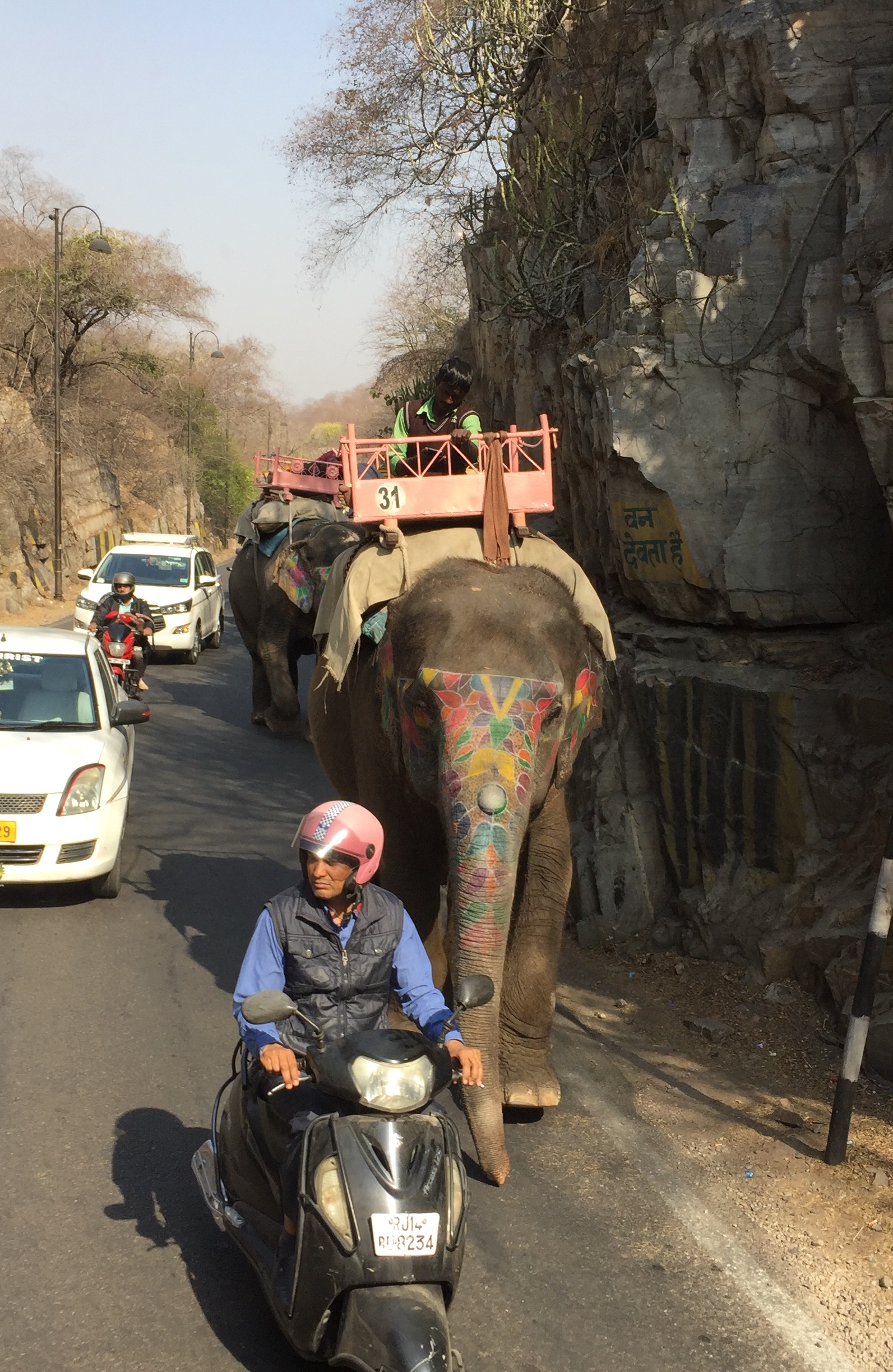
Driving in Ind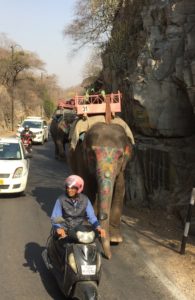 ia, an Experience of a Lifetime
ia, an Experience of a Lifetime
Honking fills the ears. Mayhem. Discomfort. Chaos. Fear. A steady flow of jostling and swerving, ebbing and flowing… yet surprisingly all the intense motion unfolds with a natural instinctive flow… as if planned all along. What at first appears as total chaos and mayhem, without rules or order, reveals itself as an productive transportation system able to squeeze and propel an incredibly large volume of vehicles and people through tiny windy ancient partially-paved streets. After careful study one is amazed at the instantaneous choreography and orchestration. Simply a marvel to behold. If a local requested and welcomed a suggestion, I shan’t have any to offer.
The horn is central to India driving, conveying various messages with a single instrument. Starting with a little ‘toot’ or ‘toot toot’ to call out ‘I am here!’ Slightly longer honks asking those in their path to move over. Long deep honks expressing beyond mere cordiality, instead demanding to be seen and heard. A constant orchestra of sound. Even trucks have messages painted on their back such as “Horn Please”. The horn is essential to motor vehicle transportation in India.
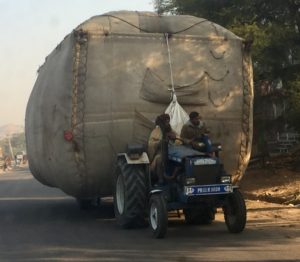
Like many countries, the quality of the road surface varies, as well as the road width. However these variations seem significantly more pronounced in India than most places. Through towns, the roads are narrow with small open shops along both sides. Between the partially-paved road and the shops is typically several feet of dirt, which functions as an extended roadway, product display area, vehicle parking, walkway, construction zone – or, most commonly, all of those at the same time. Plus the dirt is a source of constant dust in the air and layered on essentially everything.
Painted traffic lanes have little value or relevance in India, as they are ubiquitously ignored.
Even center lines are cast aside. These lines may have meaning for the road designer or building crew to signify the volume of vehicles the road can handle. In India it’s the traffic du jour that dictates what the road can handle. The “lanes” of traffic are sized based in the traffic at this instant. A car may be followed by a tuktuk and a scooter side by side. A rickshaw may be tailed by two motorcycles abreast. A “3 lane road” may have 3-4 buses abreast, 4-5 cars, 7-8 tuktuks, or 9-10 scooter — or more likely a combination of all of the above.

Even center lines are a feeble attempt to control traffic. Should there be inadequate space on one side of traffic, any available space on the other side is instantly filled… with the traffic morphing and flowing to fill every inch.
Road lanes in India possibly best resemble fast moving kayaks,
rafts, inter tubes and boats, crammed along a fast moving river engulfed with rapids – ever changing.
And starting out into traffic is not much different than jumping into the start of the 20000 runners in the NYC marathon, where there are more bodies than pavement and all are jockeying for position. Bumps, close calls, and quick halts are the norm. As well as skinny vehicles quickly veering into any glimpse of an open crack or crevasse. As far as describing right of way, I would need an Artificial Intelligence algorithm instantaneously measuring numerous factors – speed, trajectory, visibility, number of vehicles, vehicle sizes, road surface, number of pedestrians, police presence (very rare), horn frequency and volume, acceleration capability, driver friendliness, cows/ dogs/ bulls/ monkeys/ goats/ camels/ elephants, astrological sign (jk).

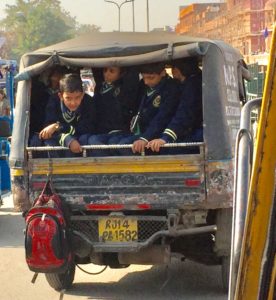
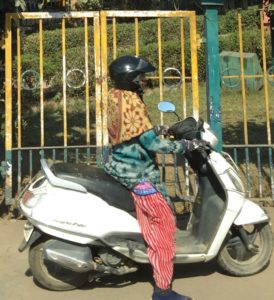
After much study, here are the rules of the road in India, based on my layman analysis:
1. Colliding with an animal is bad form, generating bad karma. Especially especially especially never ever ever crash into a cow, as they sacred (and slow moving).
2. Colliding with the police should be avoided. They will not express a sense of humor.
3. Avoid colliding with pedestrians…but honking and swiftly backing them up is a constant and somewhat expected.
4. Rickshaws are slow to react, so treat them like a cow, but with a close shave.
5. Cars are expensive, so be sure you’ve got a clear seam when you cut them off, and be sure to ignore the corresponding blaring horn.
6. Motorcycles and scooters are the swiftest on the road, and also have the best braking, so their mission is to fill any gap with high speed close calls, and near constant horn use.
7. Tuk-tuk drivers are trying to eek out a living, and simply doing the best they can to squeeze in, fill any crease, and clear a corners by up to 1 millimeter.
8. Lastly if there truly is not space for you to move over, pull into traffic, or cross lanes of traffic… no worries. Simply go for it, and, for the most part, others will slam their brakes or swerve to avoid you, lay on the horn, and the driving ritual for continues.
9. Headlights, tail lights, brake lights – yeah whatever. 10. Turn signals – what are those?
Oh, let’s not forget… even though the custom is to drive on the left side, not everyone sees that as relevant to their driving.
Happy driving!
